UPSC Daily Current Affairs - 5th June 2024 | Current Affairs & Hindu Analysis: Daily, Weekly & Monthly PDF Download
GS1/Geography
ISLANDS - THE GREATER TUNB, THE LESSER TUNB AND ABU MUSA
Source: Economic Times
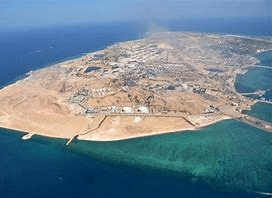
Why in news?
China reaffirmed its position on the disputed islands despite Iran's discontent, supporting the UAE's efforts for a peaceful resolution.
- The islands in question, namely the Greater Tunb, the Lesser Tunb, and Abu Musa, have been under Iranian control since 1971.
- Recent statements by China backing the UAE's stance led to Iran summoning the Chinese ambassador in protest.
About Greater Tunb and Lesser Tunb:
- Located in the eastern Persian Gulf, near the Strait of Hormuz, these islands are approximately 12 kilometers apart and south of Qeshm Island in Iran.
- Administered by Iran as part of Hormozgan Province, Greater Tunb is characterized by its red soil and disputed population figures.
- While some sources mention a small population, others claim the island is uninhabited.
- Lesser Tunb, mostly uninhabited, features a small airfield, harbor, and an entrenched Iranian military unit.
- Abu Musa, situated in the eastern Persian Gulf, is strategically positioned near the Strait of Hormuz, essential for large ships due to its location.
- These islands are crucial for maritime passage, particularly for oil tankers and significant vessels navigating the Persian Gulf.
GS3/Science and Technology
STROMATOLITES
Source: Business Insider

Why in news?
Scientists have discovered living stromatolites on Sheybarah Island in Saudi Arabia, ancient structures made from algae dating back 3.48 billion years. This find challenges previous beliefs that stromatolites only existed in modern environments like Shark Bay, Australia.
About Stromatolites
- Stromatolites are layered sedimentary formations created by photosynthetic microorganisms like cyanobacteria, sulfate-reducing bacteria, and Pseudomonadota.
- These microorganisms produce adhesive compounds that form mineral "microbial mats", building up layer by layer over time.
- They come in various forms such as conical, stratiform, domal, columnar, and branching types.
- Considered the oldest living lifeforms on Earth, stromatolites played a crucial role in the Great Oxygenation Event over two billion years ago.
- As cyanobacteria are photosynthetic, they produced oxygen as a byproduct, fundamentally changing Earth's atmosphere to its present oxygen-rich state.
- This shift paved the way for the evolution of life based on eukaryotic cells.
- Initially dominant during the Archean eon, stromatolites declined as other life forms adapted to the oxygen-rich environment.
- The rediscovery of stromatolites on Sheybarah Island offers insights into the search for extraterrestrial life, aiding in the recognition of potential life signs on other planets like Mars.
GS-II/Polity and Governance
Decoding the Lok Sabha Election Verdict 2024
Source: Indian Express
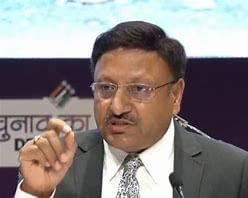
Why in News?
After the 2024 Lok Sabha elections, the BJP-led NDA is poised to establish the government for the third consecutive term.
- Despite this, the BJP's victory has been overshadowed by the remarkable performance of the opposition INDIA bloc.
Which Party Won How Many Seats?
- The BJP secured victory in 240 seats, falling short of the majority mark of 272.
- The NDA, with support from key allies like TDP and JD(U), managed to surpass the halfway mark.
- The Congress, part of the opposition INDIA bloc, won 99 seats, a significant increase from its 2019 tally.
Analysing the Lok Sabha Election Results 2024
- Return of Coalition Politics: After a decade of single-party majority rule, coalition politics resurfaces at the Centre.
- Rise of Regional Leaders: Regional leaders across India have gained prominence, impacting national politics.
- Recalibration of Power Balance: Shifts in power dynamics within BJP and BJP-RSS relations are anticipated.
- Increased Opposition Influence: Lower BJP numbers imply stronger opposition representation in Parliamentary panels.
Impact of Coalition Politics at the Centre
- Dealing with Partners: BJP's need to accommodate allies might affect policy-making flexibility.
- Structural Reforms: Coalitions historically excel in implementing structural reforms over time.
GS2/International Relations
EUROPEAN PARLIAMENT
Source: Mint
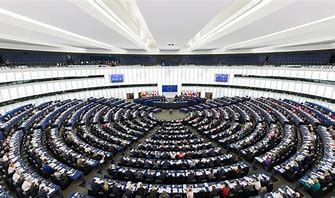
Why in News?
European Parliament elections will be held from June 6-9.
- Around 373 million citizens across the 27 member states of the European Union are eligible to vote on June 6-9 in elections to the European Parliament, which is the only directly elected body of the EU.
Key takeaways
- The European Parliament (EP) is the only directly elected body of the EU, representing the citizens of its member states.
- The Parliament has 3 main roles:
- Passing EU laws, together with the Council of the EU, based on European Commission proposals
- Deciding on international agreements
- Deciding on enlargement of the bloc
- Reviewing the Commission’s work programme and asking it to propose legislation
- Supervisory
- Democratic scrutiny of all EU institutions
- Electing the Commission President and approving the Commission as a body. Possibility of voting a motion of censure, obliging the Commission to resign
- Granting discharge, i.e. approving the way EU budgets have been spent
- Examining citizens’ petitions and setting up inquiries
- Discussing monetary policy with the European Central Bank
- Questioning Commission and Council
- Election observations
- Budgetary
- Establishing the EU budget, together with the Council
- Approving the EU’s long-term budget, the “Multiannual Financial Framework”
- Unlike national parliaments, the EP does not have the right to propose laws but can only negotiate those proposed by the executive European Commission.
The EP comprises 720 Members (MEPs) elected every five years. The MEPs then elect their president for a term of two and a half years.
It represents the second-largest democratic electorate in the world (after the Parliament of India) with an electorate of around 373 million eligible voters.
Who can vote in the elections?
- In 21 member states, people aged 18 and above can vote. In Belgium, Germany, Austria and Malta, the minimum voting age is 16. In Greece, people who turn 17 during the election year can vote, and in Hungary, married individuals can vote regardless of age.
- Citizens living in another EU country can choose to vote for candidates either from their country of origin or from their country of residence.
Who can run?
- All candidates must be EU citizens. Voters may choose from individual candidates or political parties’ delegates, depending on the country. Once elected, politicians from each nation will flow into the European groups that form the Parliament, based on political orientations.
- Elected individuals cannot hold functions in national governments or other political bodies such as the EU Commission.
GS2/Polity
Coalition government and economic reforms in India
Source: Indian Express
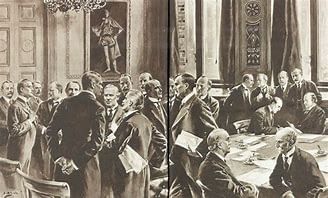
Why in news?
The NDA has won a historic third term at the Centre, but the BJP fell short of the 272-seat majority, necessitating a coalition government.
- Previously, the BJP's majority in the last two Lok Sabhas marked the first time since economic reforms began (in 1991) that a single party had a majority mandate. This was expected to positively impact India's economic reform trajectory.
Coalition Governments and Economic Reforms Since 1991
- Notable reforms brought by the previous coalition governments
Coalition Governments and Weak Economic Reforms Since 1991
- Since 1991, India's shift from a planned economy to an open economy saw all governments being coalition-based, with the leading party never achieving the majority mark of 272.
- According to Montek Singh Ahluwalia (former Deputy Chairman of the erstwhile Planning Commission), this inherent weakness resulted in a "strong consensus for weak reforms".
- While there was general agreement on the need for economic reforms, coalition parties often diverged on the specifics, leading to diluted reform measures.
Can a coalition government derail India’s economic reforms trajectory?
- This is not necessarily true in the Indian context as many notable reforms were brought by the previous coalition governments.
Coalition govt and economic reform - strong consensus for weak reforms
- Coalition governments in India have historically faced challenges in implementing strong economic reforms due to differing priorities among coalition partners.
Diverse Interests
- Coalition partners often have varied political and economic agendas, leading to compromises and diluted reforms.
- This can slow down or alter the trajectory of economic reforms.
Consensus Building
- While coalition governments can foster broader consensus, the need to appease various factions might lead to weaker reform measures.
- Achieving a unified stance on complex economic issues becomes difficult.
Policy Stability
- Frequent changes in coalition partners or internal disagreements can lead to policy instability, affecting investor confidence and long-term economic planning.
Other perspective on coalition govt and economic reforms
- The past decade under PM Narendra Modi aimed to resolve the weaknesses of coalition governments, ensuring policy stability and boosting investor confidence.
- Significant reforms such as the Goods and Services Tax (GST) and the Insolvency and Bankruptcy Code were introduced.
- However, these goals were not fully achieved.
- The government faced challenges, including failing to reform land acquisition and repealing farm reforms after widespread protests.
- The demonetisation announcement also caused significant economic uncertainty.
P V Narasimha Rao Government: Economic Liberalization
- The minority government led by P V Narasimha Rao initiated major economic reforms, discarding centralized planning, and opening the Indian economy to global competition by removing the license-permit raj.
Global Integration
- India became a member of the World Trade Organisation during this period.
Deve Gowda Government: The "Dream Budget"
- Tax Reforms:
- Finance Minister P Chidambaram introduced the "dream budget," which cut tax rates for personal income tax, corporate taxes, and customs duties, fostering trust in Indian taxpayers.
Atal Bihari Vajpayee Government: Fiscal and Infrastructure Reforms
- Fiscal Responsibility:
- The NDA government under Vajpayee implemented the Fiscal Responsibility & Budget Management (FRBM) law, limiting government borrowing and promoting fiscal discipline.
- Disinvestment and Infrastructure:
- The government advanced disinvestment of loss-making PSUs and boosted rural infrastructure with the PM Gram Sadak Yojana.
- Information Technology Act:
- The 2000 Act laid the foundation for India's thriving e-commerce sector.
Manmohan Singh Government: Rights-Based Reforms
- Education Reforms:
- The UPA government built on the Vajpayee-era Sarva Shiksha Abhiyan by enacting the Right to Education Act.
- Transparency and Welfare:
- Key reforms included the Right to Information Act, the Right to Food, and the Mahatma Gandhi National Rural Employment Guarantee Act (MG-NREGA).
- Economic and Technological Advances:
- Singh’s government deregulated fuel prices, initiated direct benefit transfers, and worked on Aadhaar and GST implementation.
GS2/Governance
Mission Karmayogi
Source: Indian Express
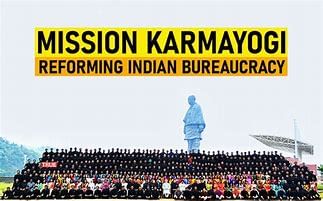
Why in news?
Indian Institute of Public Administration evaluated the impact of Mission Karmayogi by collecting feedback from recently trained personnel's supervisors.
- Reported enhancements in proficiency in data analytics and e-governance tools.
- Enhancing governance and achieving proficient and effective civil services are crucial for India's aspirations.
About Mission Karmayogi
- Mission Karmayogi, also known as the National Programme for Civil Services Capacity Building (NPCSCB), was launched by the Government of India on 2nd September 2020.
- The initiative aims to revolutionize human resource management within the government, making the bureaucracy more efficient, effective, and accountable.
- Its objective is to enhance the skills and competencies of civil servants to deliver improved outcomes for citizens.
- The mission lays the groundwork for capacity building among Indian civil servants, with a focus on enhancing governance.
Guiding Principles of Mission Karmayogi
- Transition from rule-based to role-based training and capacity building: Mission Karmayogi emphasizes enhancing the attitudes, skills, and knowledge of government officials through role-based training.
- Adoption of a competency-driven approach for capacity development: The initiative focuses on cultivating critical competencies necessary for public officials to effectively fulfill their roles.
- Facilitating continuous, lifelong learning opportunities for all: Mission Karmayogi ensures that government officials at all levels have access to opportunities for ongoing competency development.
iGOT Karmayogi
- The National Programme for Civil Services Capacity Building is set to launch a comprehensive online platform called iGOT Karmayogi.
- iGOT Karmayogi will offer online, face-to-face, and blended learning opportunities, managing lifelong learning records of officials.
- Operationalizing and maintaining a platform like iGOT necessitates a specialized institutional mechanism with expertise in technology and innovation, leading to the establishment of a Special Purpose Vehicle (SPV) named Karmayogi Bharat.
Institutional Framework for Mission Karmayogi
- The Institutional Framework comprises four entities and functional bodies, representing the Centre, State, civil society, and overseen at the highest political level.
- Included bodies are the Prime Minister’s Human Resource Council, the Cabinet Secretariat Coordination Unit, the Capacity Building Commission, and the SPV Karmayogi Bharat.
- Currently, there are 3,506,824 Total Karmayogis Onboarded with 1,039 Total Courses available, covering a range of topics from AI to self-defense techniques.
GS3/Economy
PM- KISAN
Source: Indian Express
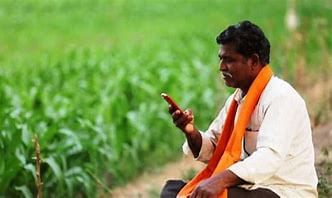
Why in News?
Last year, over 1 lakh farmers voluntarily gave up their PM-Kisan benefits.
- Data shows Bihar, Uttar Pradesh, and Rajasthan leading in farmers opting out of the scheme.
- Possible reasons for opting out include absentee landlords and change in land ownership.
About PM KISAN
- PM KISAN is a Central Sector scheme fully funded by the Government of India.
- Commenced on December 1, 2018, the scheme provides Rs. 6,000 per year to landholding farmer families.
- Defines a family as husband, wife, and minor children.
- Identification of eligible farmer families conducted by State Governments and UT administrations.
- Funds are directly transferred to beneficiaries' bank accounts.
- Exclusion categories include institutional landholders and individuals of higher economic status.
- 16th Installment of PM KISAN released by the Prime Minister on February 28, 2024.
- eKYC is mandatory for all PM KISAN Registered Farmers.
GS3/Economy
Wheat Imports
Source: Business Line
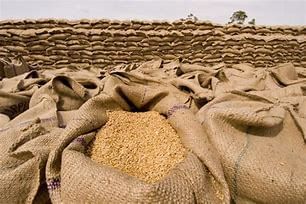
Why in news?
India, the world's second-largest wheat producer, is planning to resume wheat imports after a six-year hiatus. This decision is driven by the need to replenish depleted reserves and control rising prices caused by consecutive years of poor wheat crops.
Reasons for India to Resume Wheat Imports:
- India has witnessed a decline in wheat production over the past three years due to unfavorable weather conditions, resulting in a significant drop in output. This year, the wheat crop is projected to be 6.25% lower than the record production of 112 million metric tons in 2023.
- Government wheat stocks have dwindled to 7.5 million tons, the lowest in 16 years, as a result of selling over 10 million tons from reserves to stabilize domestic prices.
- The government aimed to procure 30-32 million metric tons of wheat in 2024 but has managed to purchase only 26.2 million tons so far.
- Domestic wheat prices have remained above the minimum support price, prompting the government to remove the 40% import duty to facilitate private traders and millers to import wheat, particularly from Russia.
Implications of Resuming Wheat Imports:
- Eliminating the import duty is expected to increase wheat supply in the domestic market, potentially alleviating price spikes.
- Lower import costs can help the government replenish depleted reserves, enhancing food security by creating a buffer against unforeseen disruptions in local production.
- Although India's import volume (3-5 million metric tons) is modest, it could impact global wheat prices due to existing high prices driven by production issues in major exporting countries like Russia.
- India's import requirement is unlikely to significantly impact the global market, with larger players continuing to wield greater influence on global wheat prices.
GS2/Polity
Two lakh plus NOTA votes in Indore
Source: Mint
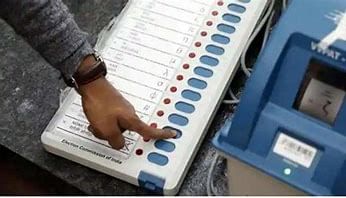
Why in news?
Among the several intriguing results emerging from counting of votes in the 2024 Lok Sabha elections is one in Indore.
NOTA's Significance in Indian Elections
- NOTA, or "None of the Above," provides voters with the option to reject all candidates on the ballot.
- It was introduced in Indian elections following a Supreme Court directive in 2013 to protect voter secrecy.
- NOTA aims to allow voters to express dissatisfaction with the available candidates.
Situation in Indore
- In the recent Indore election, BJP's Shankar Lalwani secured a significant victory with over 12 lakh votes.
- Remarkably, the number of NOTA votes reached 2,18,674, the highest ever recorded in any constituency.
Legal Implications of NOTA
- NOTA does not have a direct impact on election results; the candidate with the next highest votes wins.
- While NOTA winning hasn't affected Lok Sabha elections, the possibility was showcased in Indore.
Supreme Court Case
- The Supreme Court is examining a petition to nullify elections if NOTA emerges as the winner.
- Shiv Khera's petition urges for uniform rules for elections where NOTA wins, proposing consequences for candidates who fail to surpass NOTA.
- Examples from various states highlight the treatment of NOTA as a significant electoral candidate in local elections.
- The petition suggests barring candidates receiving fewer votes than NOTA from contesting elections for five years.
|
63 videos|5408 docs|1146 tests
|





















